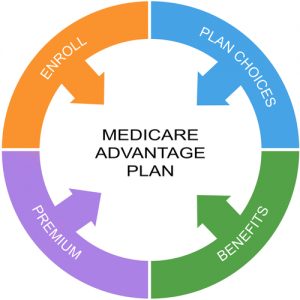
A subcommittee hearing convened by U.S. Rep. Pat Tiberi (R-OH) on Wednesday explored ways to reform Medicare Advantage programs in order to improve the delivery of care to seniors and those living with disabilities.
The hearing was part of the subcommittee’s ongoing efforts to explore integrated care delivery systems for seniors, including those that Congress will have to consider extending this year.
“I think a good place to start is to look at some of the lessons learned from smaller programs that offer targeted, coordinated care to some of the frailest and sickest beneficiaries in the Medicare program,” said Tiberi, the chairman of the House Ways and Means Subcommittee on Health. “Today is a great opportunity for us to hear about some of the impediments to providing value-driven care for this population and hear solutions that not only benefit seniors but taxpayers as well.”
Tiberi referenced two particular integrated care delivery systems for seniors: the Program for All-Inclusive Care for the Elderly (PACE), which provides “hands-on” long-term care and support for seniors who reside at home but need institutional level care, and Special Needs Plans (SNPs) for vulnerable seniors eligible for both Medicare and Medicaid.
Although Tiberi praised the PACE program for offering seniors an opportunity to stay in their communities and receive the care they need, he said the criteria for entering a PACE organization remains restrictive.
“Additionally, the regulatory and administrative burdens of operating a PACE facility can often make it difficult for PACE organizations to expand and grow to serve more beneficiaries,” he added.
Cheryl Wilson, the CEO of the National PACE Association, testified that PACE programs can reduce complications arising from chronic illnesses, therefore reducing the need for specialist care, emergency room visits and hospital stays.
“When individuals with chronic and medically complex conditions do not have access to care, their quality of life is diminished, which over time leads to increased expenditures,” Wilson said. “PACE deliberately was constructed to address the chronic care needs of individuals by providing timely and clinically appropriate treatments and social supports. Access to care in PACE results in our participants not only experiencing a higher quality of life, but also having medical outcomes meeting the highest standards.”
Dr. Mark Fendrick, the director of the University of Michigan Center for Value-Based Insurance Design, testified that the PACE program’s approach to care delivery could be an effective model going forward. “I would argue, in 2017 and beyond … that instead of blunt instruments, a much better approach would be one that is individualized, similar to the situation that we heard in the PACE programs,” he said.
When it comes to SNPs, Congress is expected to consider reauthorization before the end of the year to continue the program for seniors. However, challenges surrounding the coordination and delivery of certain types of SNPs continue to crop up.
Tiberi cited a managed care plan offered in his district, CareSource, which delayed offering SNP plans due to a lack of integration of benefits and administrative burdens.
“While continuing to offer other insurance products that serve dual-eligible beneficiaries, CareSource finds the integrated model that they are using in Northeast Ohio to be a better, more effective and more efficient model to serve dual-eligible beneficiaries — one that reduces provider burden and ensures the patient receives the care and supports needed to meet their total health care needs.”
As the Medicare population continues to grow, Tiberi said, it’s important to consider options to “move from volume to value-based care across all parts of the Medicare program.”



